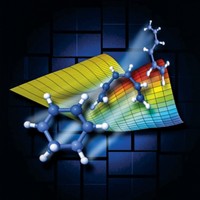Advertisement
Grab your lab coat. Let's get started
Welcome!
Welcome!
Create an account below to get 6 C&EN articles per month, receive newsletters and more - all free.
It seems this is your first time logging in online. Please enter the following information to continue.
As an ACS member you automatically get access to this site. All we need is few more details to create your reading experience.
Not you? Sign in with a different account.
Not you? Sign in with a different account.
ERROR 1
ERROR 1
ERROR 2
ERROR 2
ERROR 2
ERROR 2
ERROR 2
Password and Confirm password must match.
If you have an ACS member number, please enter it here so we can link this account to your membership. (optional)
ERROR 2
ACS values your privacy. By submitting your information, you are gaining access to C&EN and subscribing to our weekly newsletter. We use the information you provide to make your reading experience better, and we will never sell your data to third party members.
Physical Chemistry
Transition-State Energy Measured
Chemical Dynamics: Researchers use vibrational spectroscopy to follow the reaction coordinate of simple reactions
by Stu Borman
December 21, 2015
| A version of this story appeared in
Volume 93, Issue 49
In an advance that enhances the depth of understanding of chemical reaction dynamics, researchers have used spectroscopic data to determine transition-state energies and reaction coordinates. The transition state, a point at which a reactant converts to a product, and the reaction coordinate, the energy pathway or trajectory a chemical system follows, have not generally been accessible experimentally. Robert W. Field and Joshua H. Baraban of Massachusetts Institute of Technology and coworkers now find that these physical parameters can be obtained by studying changes in the spacing of vibrational energy levels of reacting systems (Science 2015, DOI: 10.1126/science.aac9668). The researchers used the technique to examine the cis-trans isomerization of acetylene (HC≡CH) and the conversion of hydrogen cyanide (HC≡N) to hydrogen isocyanide (HN≡C). The values they measured agree with those determined previously using theoretical calculations. The technique “is not a realization of the dream of direct spectroscopy of the transition state,” says 1986 Chemistry Nobel Laureate John Polanyi of the University of Toronto. “But it brings that goal closer.”





Join the conversation
Contact the reporter
Submit a Letter to the Editor for publication
Engage with us on Twitter